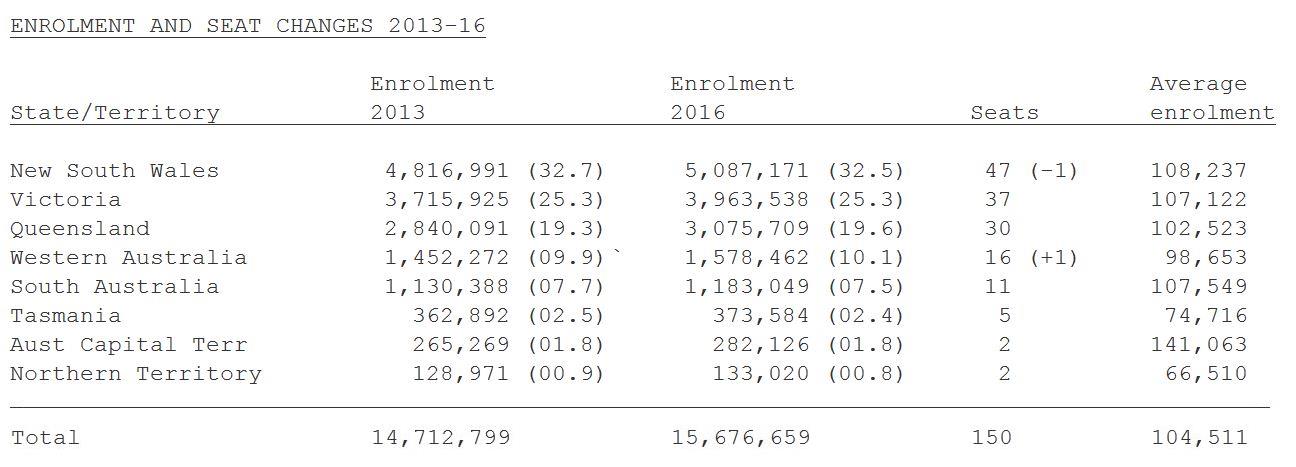Changes in enrolments and seats, 2013-16

It will be seen that enrolments in NSW, South Australia, Tasmania and (surprisingly) the Northern Territory are declining
as a proportion of the national total. Queensland and Western Australia are increasing, while Victoria and the ACT are
stable - Victoria has achived this only recently, after a long period of decline. These are long-term trends: since the 1984 enlargement
of the House of Representatives, NSW has lost four seats, Victoria two and South Australia two, while Queensland has
gained six, Western Australia three and the Northern Territory one.
The main anomaly in these figures is the over-representation of Tasmania and the Northern Territory, and the under-
representation of the ACT. Under the formula for calculating how many seats each state or territory is entitled to, Tasmania only
gets 3.25 quotas, which should give it three seats, but it is guaranteed five seats by the Constitution. The Northern
Territory gets 1.56 quotas, which gives it two seats, while the ACT gets 2.44 quotas, falling just short of
qualifying for three seats. As a result, the seat of Canberra has 143,279 voters, while Lingiari has 63,082. Western
Australia, which has just been given a 16th seat, is now slightly over-represented, but its high growth rate will see
that disappear over the next few years.
It's worth noting that in 1983, before the last enlargement of the House of Representatives, the average enrolment in
the 125 electorates was 69,478. The enlargement of the House to 148 in 1984 reduced the average enrolment to 58,546. Now,
although the House has been increased slightly to 150, the average enrolment is 104,551, an increase of 78% since 1984.
The "nexus clause" of the Constitution makes it impossible to enlarge the House without also enlarging the Senate. The
minimum possible enlargement of the Senate is two Senators per state, or 12 Senators, which would require an enlargement
of the House by 24 members, to give a House of 174. Electorates would then have an average enrolment of 90,095.
|